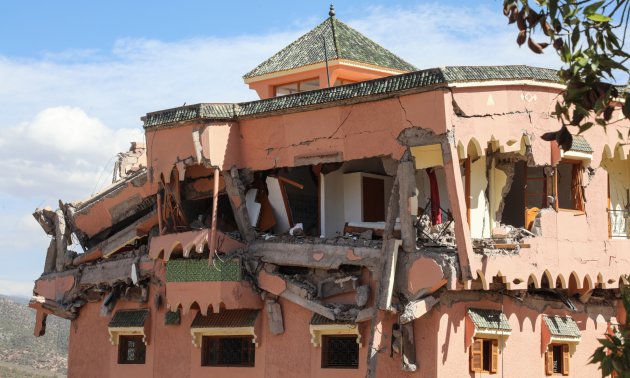On Tuesday, near the base of the Abou Abbass Sebti dam in Morocco’s Chichaoua province, officials gathered to inaugurate one of twenty new seismic monitoring stations recently installed across the country. The ceremony marked the official conclusion of the SMoRE project, a wide-reaching initiative aimed at bolstering Morocco’s preparedness for future earthquakes.
Launched in the aftermath of the devastating earthquake that struck the Al Haouz region on September 8, 2023, the SMoRE project—short for “Strengthening Morocco’s Resilience to Earthquakes”—was developed under the leadership of UNESCO, in partnership with the Japanese government, Morocco’s Ministry of Spatial Planning, and the National Center for Scientific and Technical Research (CNRST). Funded with $900,000 from Japan, the initiative emerged as an urgent response to the disaster, with the goal of transforming Morocco’s earthquake resilience from reactive to proactive.
At its core, the project focused on two main objectives: enhancing Morocco’s seismic detection capabilities and promoting a culture of risk awareness among vulnerable populations. The newly installed seismic stations are equipped with state-of-the-art instruments, including 12 seismographs, 10 accelerometers, and 8 early-warning devices. These tools are powered autonomously through solar battery systems, all housed in purpose-built or refurbished shelters to withstand harsh conditions.
To ensure fast and dependable data transmission, 37 telecommunications units were also deployed nationwide. But SMoRE was never just about technology—it also prioritized education and outreach. More than 400 individuals, including engineers, educators, and civil society representatives, took part in fifteen specialized workshops. At the same time, educational sessions were held in a dozen schools across the provinces of Al Haouz, Chichaoua, and Taroudant, targeting younger generations with information that could one day save lives.
The training curriculum ranged from earthquake-resistant construction techniques to crisis management, emergency communication, and psychosocial support. A future technical center focused on safe building practices is already in the works, and the program also spotlighted traditional Moroccan architecture by creating engaging audiovisual materials designed to inform and inspire local communities.
Speaking at the ceremony, Eric Falt, director of UNESCO’s Maghreb office, emphasized that the SMoRE project represents a proactive shift in how Morocco confronts seismic threats—an initiative sparked by tragedy but grounded in long-term vision. Japanese Ambassador Masahiro Nakata echoed that sentiment, expressing his country’s commitment to sharing decades of expertise in earthquake risk management with Morocco.
As part of the project’s legacy, a new national online platform has been launched to make seismic data publicly accessible in real time. This platform is expected to become a key tool in Morocco’s ability to anticipate and respond to earthquakes more effectively. The event brought together representatives from the various partner organizations, including Chichaoua’s governor, Bouabid El Guerrab, underscoring the collaborative spirit behind the project.
More than a series of technical upgrades, SMoRE has laid the groundwork for a systemic shift in how Morocco prepares for natural disasters. By weaving together cutting-edge technology, local engagement, and international cooperation, the project sets a new standard for seismic resilience—one that aims not just to rebuild after the next quake, but to be ready before it strikes.
